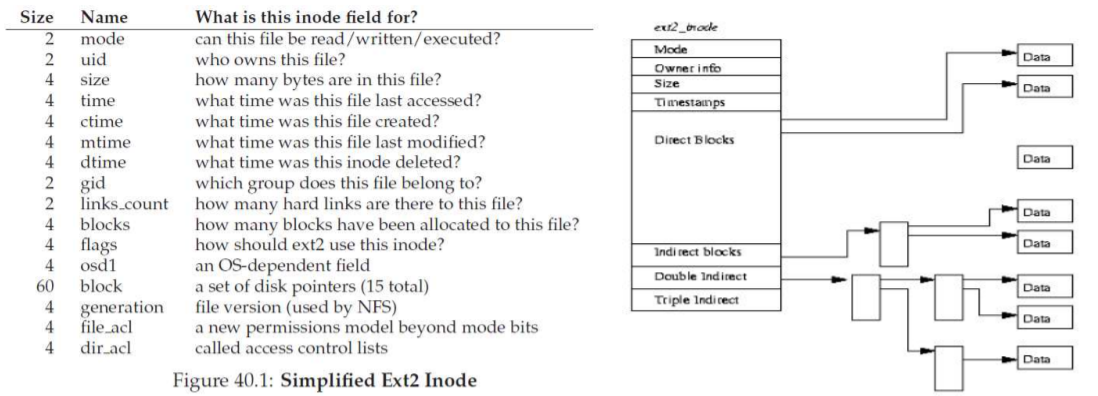reference: https://pages.cs.wisc.edu/~remzi/OSTEP/, 시스템 프로그래밍, 운영체제 수업(최종무 교수님)
1. Disk
- 파티션들로 구성
- 각 파티션에 하나의 파일 시스템 생성

그림1. disk와 각 파티션
2. Partition
- 디스크 블록들로 구성
- 유저 데이터는 디스크 블록에 저장(disk block: usally same size with the page, usally 4KB)

그림2. disk blocks- 현재 파티션에는 64개의 디스크 블록이 있다 가정.
3. Layout of a file system

(1). Superblock: 0 block
- metedata for managing a file system(one per a file system)
- information: how many data blocks, inodes, where they begin...
- used during a mount function
(2). Bitmap: 1/2 blocks
- metadata for managing free space(allocation structure)
- Two bitmaps: one for data blocks and the other for inodes
- free space
- one bit per block(or inode), including whether it is free or used
- Alternative approach: free-list, tree, …
- Pre-allocation: allocate free disk blocks in a batch manner -> less overhead, contiguous allocation, …
(3). inode: 3~7 blocks
- matadata for managing files(one per a file)
- inode size = 256B
=> 16 inodes per a block
=> 5 blocks for inode
=> total 80 files can be created
(4). User data: 8~63 blocks (can be dynamically adjusted)
- data written by users
4. inode
How to manage metadata for a file?
- inode (index node)
- (1) File information such as mode, uid, size, time, link count, blocks, …
- (2) Locations of User data blocks => Multi-level index and imblanced tree
- direct block pointers, single/double/triple indirect block pointers
- benefit: fast for a short file and big size support for a large file
- other approach: FAT(linked based), Extent-based, Log-badsed ..

그림4. file information in inode and inode layout
